Youth Orchestra

Spring Concert
May 5, 2023
2022/23 SEASON
DANIEL REIT H– MUS I C DIRECT OR SUPPORTED BY THE GEOFFREY AND SARAH GUND ENDOWMENT






Spring Concert
May 5, 2023
2022/23 SEASON
DANIEL REIT H– MUS I C DIRECT OR SUPPORTED BY THE GEOFFREY AND SARAH GUND ENDOWMENT




Friday, May 5, 2023, at 8:00 p.m.
Jack, Joseph and Morton Mandel Concert Hall at Severance Music Center
Daniel Reith , conductor
KURT SCHWERTSIK (b. 1935)
Herr K. entdeckt Amerika, Opus 101
I. Überfahrt (The Crossing) —
II. Im Hotel (In the Hotel)
III. Unterwegs (Traveling)
IV. Das Naturtheater von Oklahoma
JEAN SIBELIUS (1865–1957)
Violin Concerto in D minor, Opus 47
I. Allegro moderato
II. Adagio di molto
III. Allegro, ma non tanto
MARINA ZIEGLER, violin
INTERMISSION
SERGEI RACHMANINOFF (1873–1943)
Symphony No. 3 in A minor, Opus 44
I. Lento — Allegro moderato
II. Adagio ma non troppo — Allegro vivace
III. Allegro
This performance is about 1 hour and 50 minutes in length. Major support for the Cleveland Orchestra Youth Orchestra provided by The Geoffrey and Sarah Gund Endowment.
Tonight’s concert will be broadcast on ideastream/WCLV Classical 90.3 FM on Sundays, June 18 and August 20, 2023, at 4:00 p.m.
You make dreams come true.
From a Cleveland Orchestra Youth Orchestra (COYO) musician to an international solo artist — your support makes dreams come true.
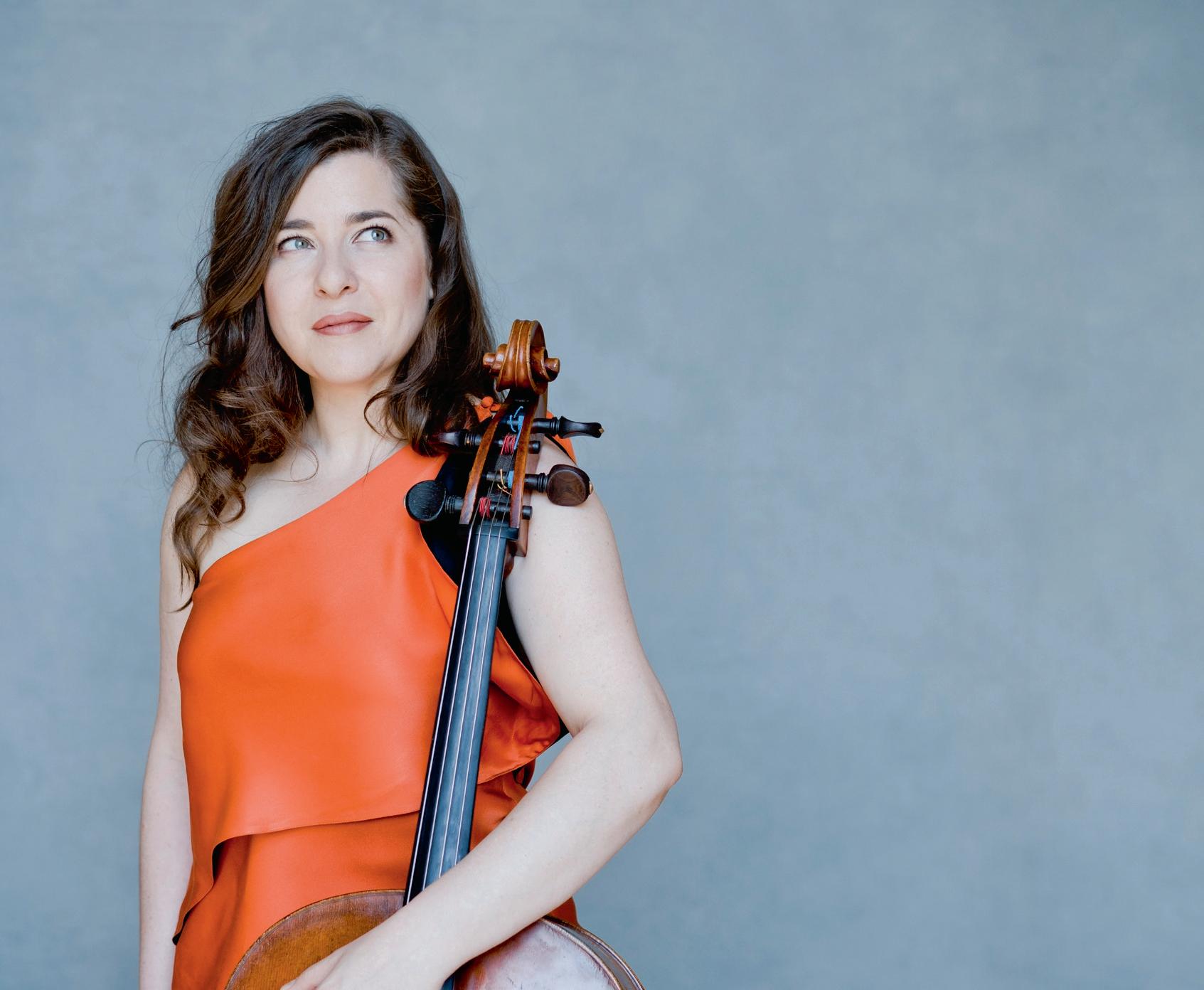
Now is the time to support the next generation of musicians. Donor. Dream-maker. That’s you.
Play your part. Make your gift today!
clevelandorchestra.com/give

“I believe wholeheartedly that music education should be a part of every child’s curriculum.”
— Alisa Weilerstein, guest artist and former COYO musician
Composed: 2008
If the First Viennese School includes the classical heavyweights of Haydn, Mozart, and Beethoven and the Second features Schoenberg, Webern, Berg, and the other serialists, then Austrian composer Kurt Schwertsik can be credited as a founder of the Third School to come out of the city.
BY Kurt SchwertsikBORN
A student of the iconoclastic 20th-century figure Karlheinz Stockhausen, Schwertsik was also inspired by avant-gardists John Cage and Cornelius Cardew. Schwertsik, controversially, turned toward more conventional forms; he rejected the ideas of serialism preferring to explore the path of tonal music.
June 25, 1935
Vienna
But styles and trends change, and over the past several decades, Schwertsik has established himself as one of the most respected living composers in Austria. He boasts a substantial catalogue of operas, ballets, works for large and chamber ensembles, and many song cycles (a number of which were written for his wife, Christa Schwertsik).

Written in 2008, Herr K. entdeckt Amerika (Mr. K. Discovers America) is based on Franz Kafka’s incomplete novel, Amerika. The story follows Karl Rossman, a young man of few convictions whose parents send him to America as punishment.
The first section, Überfahrt (The Crossing) follows Karl on his journey across the Atlantic and past the Statue of Liberty. A steady, rippling rhythm propels the music forward as some brassy interjections perhaps allude to Karl’s destination.
Once in the US, Karl finds work as a liftboy at an elegant Hotel, described in the second movement. The nervous humming in the strings sets an ominous tone, as Karl is subjected to a series of humiliations. The third movement, Unterwegs (Traveling) is at first menacing, but a wandering flute melody guides the protagonist out of the city and into the wide-open landscape. Coplandesque sonorities describe the expansive prairies of the Midwest that Karl crosses in order to join the Nature Theater of Oklahoma. The lively final section is named for this troupe and offers some of the spectacle and suspense, and as an invention of Kafka, a hearty serving of the absurd.
Duration: about 15 minutes
Composed: 1903, revised 1905
BY Jean SibeliusBORN
December 8, 1865
Hämeenlinna, Finland DIED
“I’ve got some lovely themes for a violin concerto,” Jean Sibelius wrote to his wife, Aino, in September 1902. The Finnish composer, already a national figure, had been asked by the celebrated German violinist Willy Burmester to write a violin concerto. Despite the “lovely themes” Sibelius had in mind, the concerto wasn’t coming along as expected due to a deep sense of insecurity that resulted in the composer’s alcohol dependency. It was a year before Sibelius sent the piano score to Burmester, who responded enthusiastically: “I can only say one thing: Wonderful! Masterly! Only once before have I spoken in such terms of a composer, and that was when Tchaikovsky showed me his concerto.”
September 20, 1957
Järvenpää, Finland
Sibelius completed the concerto well before the anticipated premiere, when Burmester was unavailable. Instead a local violin teacher, Viktor Nováček, performed it. Sibelius biographer Erik Tawaststjerna wrote that at the Helsinki premiere, “a red-faced and perspiring Nováček fought a losing battle with a solo part that bristled with even greater difficulties in this first version than it does in the definitive score.”
After the Helsinki premiere, Sibelius was dissatisfied with the work and decided to revise it entirely. Once the definitive version was completed, he sent it off to his German publisher, who suggested Karl Halíř as the soloist. Sibelius acquiesced, passing Burmester over for the second time. Greatly offended, Burmester never played the work whose composition he had initiated.

Halíř, the concertmaster of the Berlin Court Opera, debuted the concerto, however, it is dedicated to an exceptionally gifted 17-yearold Hungarian named Ferenc von Vecsey, who would become the work’s first champion, performing it internationally, including its first presentations in Cleveland.
Ultimately, Sibelius wrote his concerto for neither Burmester nor anyone else but himself. Sibelius’s primary instrument was the violin,
and as a young man, he had hoped to become a concert violinist. Tawaststjerna explained, “Naturally in his imagination Sibelius identifies himself with the soloist in the Violin Concerto and this may well explain something of its nostalgia and romantic intensity.”
and as a young man, he had hoped to become a concert violinist. Tawaststjerna explained, “Naturally in his imagination Sibelius identifies himself with the soloist in the Violin Concerto and this may well explain something of its nostalgia and romantic intensity.”
Nostalgia and romantic intensity — these are indeed key to describing the Sibelius Violin Concerto. Written in the first years of the 20th century, it looks back to the great Romantic concertos of the 19th. The opening of the first movement, with the D-minor tremolos of the muted first and second violins over which the soloist plays a wistful melody, is unabashedly old-fashioned. The only unconventional features are the repeated augmented fourth leaps (from D to G-sharp or G to C-sharp), which create harsher sonorities, and the irregular phrase structure of the theme, which makes it difficult to predict how the melody is going to evolve.
Nostalgia and romantic intensity — these are indeed key to describing the Sibelius Violin Concerto. Written in the first years of the 20th century, it looks back to the great Romantic concertos of the 19th. The opening of the first movement, with the D-minor tremolos of the muted first and second violins over which the soloist plays a wistful melody, is unabashedly old-fashioned. The only unconventional features are the repeated augmented fourth leaps (from D to G-sharp or G to C-sharp), which create harsher sonorities, and the irregular phrase structure of the theme, which makes it difficult to predict how the melody is going to evolve.
Simple and song-like at first, the violin part gradually becomes more and more agitated, erupting in a first virtuoso cadenza, which takes the place of a traditional development section. The cadenza is followed by a free recapitulation in which the first melody returns almost literally. The second theme (especially in its orchestral rendition) is substantially modified. The melody of the third section is now given to the violas while the soloist adds virtuoso passages, turning the ending of the movement into a kind of grandiose fantasy.
Simple and song-like at first, the violin part gradually becomes more and more agitated, erupting in a first virtuoso cadenza, which takes the place of a traditional development section. The cadenza is followed by a free recapitulation in which the first melody returns almost literally. The second theme (especially in its orchestral rendition) is substantially modified. The melody of the third section is now given to the violas while the soloist adds virtuoso passages, turning the ending of the movement into a kind of grandiose fantasy.
The second movement, marked Adagio di molto, is based on the combination of two themes, one played by the two clarinets at the beginning, the other by the solo violin a few measures later. The violin melody is, according to the composer’s own written instruction, “sonorous and expressive.” The clarinet theme later grows into an impassioned middle section whose dynamism carries over into the recapitulation of the violin melody. Only at the very end does the melody rediscover its initial peace and tranquility.
The second movement, marked Adagio di molto, is based on the combination of two themes, one played by the two clarinets at the beginning, the other by the solo violin a few measures later. The violin melody is, according to the composer’s own written instruction, “sonorous and expressive.” The clarinet theme later grows into an impassioned middle section whose dynamism carries over into the recapitulation of the violin melody. Only at the very end does the melody rediscover its initial peace and tranquility.
The third-movement finale was described by musicologist Donald Francis Toveys as a “polonaise for polar bears.” Tovey’s words capture the singular combination of dance rhythms and a certain elegant, heavy footedness felt at the beginning of this movement. Again, there are two themes, one in a polonaise rhythm, and one based on the alternation of 6/8 and 3/4 time. “With this,” Tovey concluded his analysis, “we can safely leave the finale to dance the listener into Finland, or whatever Fairyland Sibelius will have us attain.”
The third-movement finale was described by musicologist Donald Francis Toveys as a “polonaise for polar bears.” Tovey’s words capture the singular combination of dance rhythms and a certain elegant, heavy footedness felt at the beginning of this movement. Again, there are two themes, one in a polonaise rhythm, and one based on the alternation of 6/8 and 3/4 time. “With this,” Tovey concluded his analysis, “we can safely leave the finale to dance the listener into Finland, or whatever Fairyland Sibelius will have us attain.”
Duration: about 30 minutes
Duration: about 30 minutes
Composed: 1935–36
BY Sergei RachmaninoffBORN
April 1, 1873
Oneg, near Novgorod, Russia DIED
March 28, 1943
Beverly Hills, California
For years after leaving Russia in 1918, Rachmaninoff wrote almost no music. Facing the need to support his family, he changed the course of his life at the age of 45, embarking on a virtuoso career. Although he had been famous as a pianist since his youth, he had rarely performed anything but his own music. He now built up a repertoire, quickly establishing his international reputation as one of the greatest pianists of his time. His busy concert schedule in Europe and the United States left little time for composing. His only major works written during the 1920s were the Fourth Piano Concerto and the Three Russian Songs for chorus and orchestra.
It was not until the 1930s that Rachmaninoff again devoted more time to composing. In the villa he bought in Switzerland, he at last had time and peace of mind to engage in large-scale creative projects. In 1934, he wrote his popular Rhapsody on a Theme of Paganini, followed by the Third Symphony, and the Symphonic Dances (which was his last finished composition).

Almost 30 years separate the Third Symphony from the Second from 1907, but Rachmaninoff stayed remarkably true to himself, though with a style that had become richer with an expanded range of colors. A symphony, to Rachmaninoff passed down from his idol Tchaikovsky, was an invariably majestic and dignified work for orchestra whose movements were fairly standardized in character and whose formal structure followed tradition. The composer’s task was to fill that structure with his best melodies.
Rachmaninoff achieved this task admirably, introducing many subtle motivic innovations within the prescribed framework. In many ways, the formal rules helped impose a Classical discipline on his unbridled Romantic imagination. For example, the first movement of the Third Symphony is written in standard sonata form, with an easily recognizable opening theme, second theme, development section, and recapitulation. The second-movement Adagio has an “Allegro vivace” middle section that combines the traditional two middle movements of
a symphony into one. The third-movement finale is again in sonata form; although its structure is less rigorous than that of the first movement.
Like the first two Rachmaninoff symphonies, the Third opens with a motto that recurs in all movements. This motto is made up of only three different notes; despite its simplicity, however, it bears the stamp of Rachmaninoff’s personality. Scored for clarinet, muted horn, and muted cello, it immediately draws our attention to the virtuosic orchestration that characterizes the entire piece. Patrick Piggott, writing on Rachmaninoff for the BBC Music Guide series, explains this motto as a “fatalistic” reminder “that our destiny is inescapable and that however persuasive human eloquence may be, fate will have the last, inevitable word.” The motto transforms in rhythm and orchestration to adopt a more resolute, dramatic tone, yet it is most memorable at the end of both the first and the second movements in a veiled, quiet pianissimo passage and with an unmistakable tinge of resignation.
The second movement contains many exquisite moments featuring successive solos for horn (accompanied by harp), violin, flute (accompanied by harp, celesta, and four solo violas), and bass clarinet. The fast middle section is remarkable for its rhythmic poignancy and many sudden contrasts in volume and instrumentation. The transition from slow to fast and back to the first tempo are signaled by a trill played alternately by the first and second violins. The movement ends with the motto, played pianissimo by plucked strings, closing the movement with a whisper.
The themes that make up the third movement are diverse in tempo, tonality, and orchestration. The buoyant first theme, played by the full orchestra with a strong rhythmic drive, is contrasted with a more lyrical second subject, to which the forceful chords of the harp make a significant contribution. A small melodic fragment, introduced by an unaccompanied solo bassoon, turns out to be the cell out of which a whole central fugue-like section grows. Some writers have detected traces of the famous “Dies irae” (which plays an important role in several of Rachmaninoff’s works) in parts of this finale. Its dark character, at any rate, seems hardly relevant to the exuberant mood of this section. The coda, which combines the first few notes of the chant with the symphony’s motto, belongs to the most brilliant moments in the piece: the final A-major chord is approached from an unusual angle that shows that Rachmaninoff was not always as conservative he is reputed to have been. Still, Rachmaninoff’s Third Symphony is perhaps the last blossom on the tree of the Russian symphonic tradition symbolized by the name of Tchaikovsky.
Duration: about 40 minutes
Moshi Tang
CONCERTMASTER
Hawken School
Lizzy Huang
ASSISTANT CONCERTMASTER
Shaker Heights High School
Emily Boron
Shaker Heights High School
Christina Bencin
Hathaway Brown
Aidan Scheuer
Westlake High School
Cavin Xue
Western Reserve Academy
Kailani Farivar
Solon High School
Andrew Heinzen
Roxboro Middle School
Brian Hong
Solon High School
Carol Huang
Hathaway Brown
Harris Wang
Solon Middle School
Alice Han
Beachwood Middle School
Audrey Greer
Strongsville High School
Yikun Zhao
Hawken School
Marina Ziegler
Copley High School
Sherry Du
PRINCIPAL
Hudson High School
Avaneesh Polaconda
ASSISTANT PRINCIPAL
Strongsville High School
Anika Westerbeke
Hawken Mastery School
Chengyu Jiang
Solon High School
Sophie Ng
Avon High School
Ehren Collins University School
Hana Mazak
Brecksville-Broadview Heights High School
Jacob Andreini University School
Holly Bennett
Cleveland School of the Arts
Sophia Muller
Cleveland Heights High School
Cyprus Foster Homeschooled
Hannah Lee
Hudson High School
Julia Peyrebrune R
The Lyceum
Roy Morcos Sc, Si
Hudson High School
Milo Page
Homeschooled
Nicolo Moulthrop
Shaker Heights High School
Jason Wei
Solon High School
Bennett Wong Mentor High School
Ethan Lee Mentor High School
Lindsey Jones
Oberlin Senior High School
Alexandra Yeoh Homeschooled
Kobby Owusu PRINCIPAL
Solon High School
Eleanor Pompa ASSISTANT PRINCIPAL Laurel School
Ada Ortan
Avon High School
Aiden Tian
Hawken Upper School
Louis X. Wang Solon High School
Alexandra Chen
Oberlin Senior High School
Elena Ziegler
Copley High School
Jill King
Lakewood High School
Chengyu Li
Beachwood High School
Claire Hua
Western Reserve Academy
Stine Adkins
Westlake High School
Kaiden Honaker
Twinsburg City School District
Jonathan Jacques PRINCIPAL
Shaker Heights High School
Travis Phillips
ASSISTANT PRINCIPAL University School
Bettie McGurr
Hudson High School
Sullivan Wiggins Shaker Heights High School
Bobby Johnston
Brecksville-Broadview Heights High School
Rowan Toth-Cseplo
Harvey S. Firestone CLC
Sachin Singh University School
Amy Deng
Avon Lake High School
Olivia Fritz R
Homeschooled
Grace Gregg Si
Brunswick High School
Elena Ko Sc
Avon High School
Christine Kim
Hathaway Brown
PICCOLO
Olivia Fritz Sc
Elena Ko R
OBOES
Sophie Craciun R
Lakewood High School
Matthew Dawson Si
Mentor High School
Andrew Kelly Sc Bay Village Middle School
Isabel Martin
Walsh Jesuit High School
ENGLISH HORN
Isabel Martin R
CLARINETS
Elizabeth Corn
Ontario High School
Chloe Fuller
Villa Angela-St.
Joseph High School
Owen Ganor Sc, Si, R
Rocky River High School
Ava Haehn
Riverside High School
Shannon Joyce Saint Joseph Academy
BASSOONS
Emma Foster Sc, Si, R
Copley High School
Meghan Janke Green Local Schools
CONTRABASSOON
Madeline Wilks R **
HORNS
Jack Berendt R
Aurora High School
Maxwell Foster Sc
Hudson High School
Josslyn Rossos
Brecksville-Broadview Heights High School
Alyssa Webb Si
Olmsted Falls High School
TRUMPETS
Frank Berendt Si
Aurora High School
Sam Haskell
Brunswick High School
Kahlen Sykora
Jackson Local Schools
Alex Yufei Wu Sc, R Western Reserve Academy
Grace Berendt Si
Aurora High School
Elden Schrembeck Sc, R
Lake High School
Thomas Toth Mentor High School
TUBA
Casey Mobley Sc, R Wadsworth High School
TIMPANI
Aaron Miller Sc, R Lake High School
David Schrembeck Si Lake High School
Major support for the Cleveland Orchestra Youth Orchestra is provided by The Geoffrey and Sarah Gund Endowment. The Cleveland Orchestra Youth Orchestra is supported by a generous grant from the Martha Holden Jennings Foundation and by gifts from many other donors from across Northeast Ohio. Endowment support is provided by The George Gund Foundation
Abigail Bemak
Lakeland Community College
Aaron Miller
David Schrembeck
Jacob Chang **
Sebastião Sheldrick **
Kaden Smutz **
HARP
Lina Tian Sc, R
Hathaway Brown
CELESTA
Isabel Mearini R
Shaker Heights High School
Kennedy McKain
Malia Rivera
Lauren Generette
COYO performers are listed alphabetically within each woodwind, brass, and percussion sections. Superscripts indicate principal player according to the following key:
Sc Schwertsik
Si Sibelius
R Rachmaninoff
** Extra/substitute musician
The following eight endowed Youth Orchestra chairs have been created in recognition of generous gifts to The Cleveland Orchestra’s endowment:
Concertmaster, Daniel Majeske Memorial Chair
Principal Cello, Barbara P. and Alan S. Geismer Chair
Principal Viola, Anthony T. and Patricia A. Lauria Chair
Principal Bass, Anthony F. Knight Memorial Chair
Principal Flute, Virginia S. Jones Memorial Chair
Piccolo, Patience Cameron Hoskins Chair
Principal Harp, Norma Battes Chair
Principal Keyboard, Victor C. Laughlin M.D. Memorial Chair





Daniel Reith was appointed assistant conductor of The Cleveland Orchestra and music director of the Cleveland Orchestra Youth Orchestra (COYO) starting in the 2022–23 season. As COYO’s music director, Mr. Reith oversees the ensemble’s artistic planning, selects personnel for the ensemble, and leads rehearsals and performances of the Youth Orchestra. He’s also actively involved with the Orchestra’s education programs and community performances, and provides assistance for the Orchestra’s Classical and Blossom Music Festival seasons.
Mr. Reith was the 2019 winner of Opptakt, Talent Norway’s program for fostering young conductors, and has since performed with the Bergen Philharmonic Orchestra, Norwegian Radio Orchestra, Stavanger Symphony Orchestra, Trondheim Symphony Orchestra, and the Norwegian Armed Forces. In 2022, Mr. Reith made his debuts with the Kristiansand Symphony Orchestra and Oslo Philharmonic Orchestra. He also served as assistant conductor for the Norwegian Opera production of Orpheus in the Underworld.

In addition to his conducting work, Mr. Reith is a talented pianist and chamber musician, having performed in concerts and competitions throughout Germany, Norway, and other countries. Mr. Reith has been awarded several scholarships in Germany, where he’s worked with orchestras such as the Hamburg Philharmonic and Neubrandenburg Philharmonic.
Mr. Reith grew up in Bühl, Germany, and studied music in his home country as well as Norway. He received bachelor’s degrees in piano from Freiburg’s Academy of Music and the Norwegian Academy of Music. He also received a bachelor’s degree in music theory at Freiburg’s Academy of Music, followed by a bachelor’s degree in conducting at Frankfurt University of Music and Performing Arts. In 2021, he received his master’s degree in conducting at the Norwegian Academy of Music.
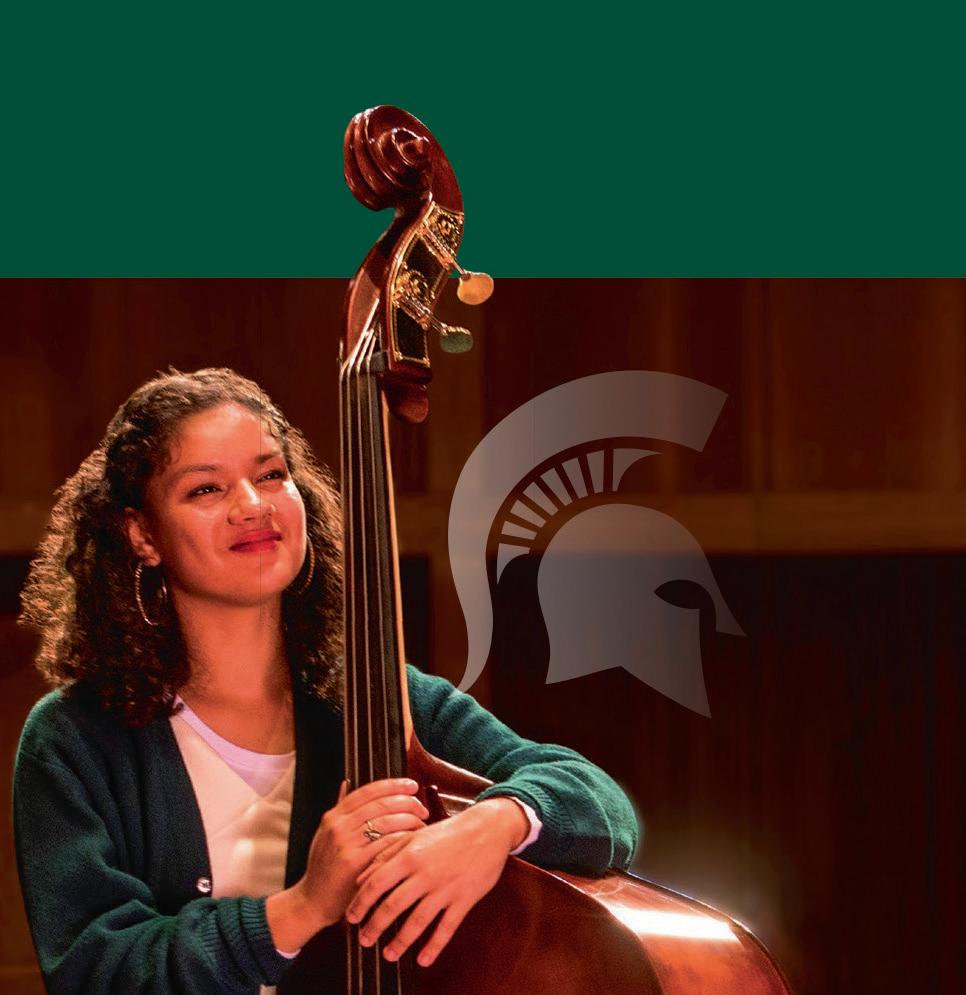




Marina Ziegler began her journey with music at age four, studying piano with her mother, Mayumi Kikuchi. A year later, she began violin at the Sato Center for Suzuki Studies at the Cleveland Institute of Music (CIM) with Stephen Sims. Marina continued her studies with Cleveland Orchestra first violin Isabel Trautwein and CIM Preparatory faculty Eugenia Poustyreva. She also studied piano with Nancy Bachus. Marina currently studies with David Bowlin at the Oberlin Conservatory of Music and Carolyn Gadiel Warner of The Cleveland Orchestra.
Marina has won prizes in the Ohio Federation of Music Clubs Competitions and awards in both piano and string divisions of the Ohio Buckeye State Competition. She also won the Suburban Symphony Orchestra Young Soloists Concerto Competition in 2020 and 2021 and appeared as a soloist in 2021. This season, she performs the Sibelius Violin Concerto with both the Suburban Symphony Orchestra and the Cleveland Orchestra Youth Orchestra (COYO).
Marina joined COYO in 2019. She participates in the CIM Preparatory Chamber Music program as a violinist, violist, and pianist. Her coaches in chamber music include Annie Fullard (Cavani String Quartet), Peter Stumpf (Jacobs School of Music), Nicholas Cords (New England Conservatory), Janet Ying (Ying Quartet), and Liz Freivogel (Jupiter String Quartet).

Last year, Marina joined Carnegie Hall’s National Youth Orchestra of the United States of America (NYO-USA). As part of the orchestra, she played at Carnegie Hall as well as major concert halls across Europe with conductor Daniel Harding and cellist Alisa Weilerstein. She also participated in Chamber Music Northwest’s inaugural Young Artist Institute in Portland, Oregon, studying with Soovin Kim and Cleveland Orchestra assistant concertmaster Jessica Lee. She previously attended Bowdoin International Music Festival, Credo Festival, Boston University Tanglewood Institute, and ENCORE Chamber Music Institute.
Marina is a senior at Copley High School. She teaches piano to beginners at her mother’s home studio. When she isn’t practicing, she enjoys going on drives, hiking with her dog, Yoshi, and making coffee.
Jacob Andreini (violin, 2021–23) will attend Rice University with plans to major in economics Abigail
Bemak (percussion, 2022–23) plans to pursue a music degree
Christina Bencin (violin, 2018–23) will pursue computational applied mathematics and operations research at Rice University Holly Bennett (violin, 2022–23) plans to major in violin performance at University of Cincinnati College-Conservatory of Music
Emily Boron (violin, 2021–23) will attend Brown University, studying classics and biochemistry Alexandra Chen (cello, 2022–23) will pursue a double major in neuroscience and political science, as well as a minor in music at Oberlin College and Conservatory
Ehren Collins (violin, 2019–23) will pursue studies in computer science, mathematics, and violin at University of Rochester/Eastman School of Music Elizabeth
Corn (clarinet, 2022–23) will pursue clarinet performance and music technology at Capital University
Sophie Craciun (oboe, 2022–23) will attend The Ohio State University
Matthew Dawson (oboe, 2021–23) will pursue oboe performance and music education at University of Cincinnati College-Conservatory of Music Amy Deng (flute, 2021–23) will pursue a major in biology at University of Florida Maxwell
Foster (horn, 2022–23) will study vocal music education at Capital
University Olivia Fritz (flute, 2020–23) will study flute performance at Carnegie Mellon University
Chloe Fuller (clarinet, 2021–23) will pursue studies in arts management and clarinet performance at Baldwin Wallace University Owen Ganor (clarinet, 2020–23) will pursue clarinet performance and biology at Oberlin College and Conservatory
Audrey Greer (violin, 2022–23) will pursue a degree in finance at Villanova University Grace Gregg (flute, 2022–23) plans to study flute performance at The Ohio State University Brian Hong (violin, 2021–23) will study mathematics at University of California, Los Angeles
Lizzy Huang (violin, 2017–23) will attend Harvard College to study philosophy, psychology, and musicology Jonathan Jacques (bass, 2019–23) plans to pursue biology, premed, and music
Shannon Joyce (clarinet, 2022–23) plans to study music education at University of Cincinnati CollegeConservatory of Music Jill King (cello, 2020–23) will attend Case Western Reserve University
Ethan Lee (viola, 2021–23) plans to study economics Bettie McGurr (bass, 2020–23) will attend Ohio Wesleyan University to pursue English and medieval studies
Isabel Mearini (keyboard, 2021–23) plans to pursue piano performance at University of Cincinnati CollegeConservatory of Music
Aaron Miller (percussion, 2022–23) will pursue music education and percussion performance at University of Akron Roy Morcos (viola, 2020–23) Nicolo Moulthrop (violin, 2022–23) will pursue studies in math and music Kobby Owusu (cello, 2019–23) will study molecular, cellular, and developmental biology and music at Yale University
Eleanor Pompa (cello, 2019–23) will pursue cello performance at Cleveland Institute of Music
Josslyn Rossos (horn, 2021–23) will double major in horn performance and environmental sciences at Baldwin Wallace University
Aidan Scheuer (violin, 2020–23) will study music composition at the Indiana University Jacobs School of Music
Sachin Singh (bass, 2021–23) plans to study finance and pre-med at The Ohio State University
Moshi Tang (violin, 2017–23) will attend the Harvard College/ New England Conservatory dualdegree program
Alyssa Webb (horn, 2020–23) will pursue French horn performance at University of Cincinnati College-Conservatory of Music Bennett Wong (viola, 2020–23) will study electrical engineering at University of Cincinnati
Alex Yufei Wu (trumpet, 2020–23)will pursue a double major in music and psychology at Columbia University Marina Ziegler (violin, 2019–23) will pursue violin performance at Rice University
The thousands of students who have been members of the Cleveland Orchestra Youth Orchestra represent a remarkable group of talented young people. For some, their interest in music has carried them forward into careers as educators and performers. For others, music continues as an important part of their lives and careers in business, the arts, recreation, or community service. We offer our sincere congratulations to this year’s class and wish them success on the next leg of their journey!
The Cleveland Orchestra Youth Orchestra is a full symphonic ensemble composed of 89 young musicians drawn from 41 communities in 12 counties across Northern Ohio. Founded in 1986 by Jahja Ling (then resident conductor of The Cleveland Orchestra), the Cleveland Orchestra Youth Orchestra (COYO) provides serious young music students of middle and high school age with a unique pre-professional orchestral training experience. The 2022–23 season marks COYO’s 37th season and the first under the direction of Daniel Reith.
Among the acclaimed artists to work with COYO are Marin Alsop, Pierre Boulez, Stéphane Denève, Christoph von Dohnányi, Giancarlo Guerrero, Witold Lutosławski, Yo-Yo Ma, Gil Shaham, Michael Tilson Thomas, Antoni Wit, and Cleveland Orchestra Music Director Franz Welser-Möst. The ensemble has been featured on three international tours.
The Cleveland Orchestra Youth Orchestra is part of a suite of Cleveland Orchestra programs designed to nurture aspiring young musicians, which also includes the Cleveland Orchestra Youth Chorus, the Cleveland Orchestra Children’s Chorus and Preparatory Chorus, and the Crescendo and Music Mentors pathways initiatives for students in Cleveland schools. In addition, with the support of many generous individual, foundation, corporate, and governmental funding partners, the Orchestra’s full range of education and community programs reach more than 100,000 young people and adults annually, helping to foster a lifelong relationship with music by removing barriers to participation, advocating for and helping to facilitate equitable access to comprehensive music education in schools, and harnessing the lifechanging power in service to the community.
At Interlochen Arts Camp, you’ll hone your technical and performance skills while learning from world-renowned instructors, artists, and composers. Whether in an intensive study or a summer-long immersion in music, you’ll grow as a musician and a performing artist.

INTERLOCHEN ARTS CAMP - Grades 3-12 Scholarships are available
INTERLOCHEN ONLINE - Grades 2-12
Experience Interlochen in your home



Watch piano’s rising stars take the stage for extraordinary performances highlighting the next generation of classical music!






For information on tickets and events visit pianocleveland.org

The following members of The Cleveland Orchestra have served as section coaches for the Youth Orchestra in preparation for this concert:
VIOLINS
Stephen Tavani
Assistant Concertmaster
Kathleen Collins
Isabel Trautwein
Elayna Duitman
VIOLA
Stanley Konopka
Assistant Principal
CELLOS
David Alan Harrell
BASSES
Mark Atherton
FLUTES
Jessica Sindell
Assistant Principal
John Rautenberg Emeritus
OBOE
Frank Rosenwein
Principal
CLARINET
Robert Woolfrey
BASSOON
Phil Austin Emeritus
HORN
Hans Clebsch
TRUMPET
Lyle Steelman
Assistant Principal
TROMBONE
Shachar Israel
Assistant Principal
TUBA
Yasuhito Sugiyama
PERCUSSION
Thomas Sherwood
HARP
Trina Struble Principal
Joela Jones Emeritus
Michael Ferraguto
Librarian
This season marks the conclusion of the coaching services of Lyle Steelman — trumpet coach since the 2006–07 season, and Peter Otto — first violin coach since the 2016–17 season. It is with the utmost gratitude that we honor their commitment and dedication to the young musicians of the Cleveland Orchestra Youth Orchestra.
The members of the Cleveland Orchestra Youth Orchestra express gratitude to their school music directors for the role they play on a daily basis in developing musical skills:
Mason Smith Aurora High School
Jesse Martin
Avon High School
Joshua Brunger Avon Lake High School
Mark Awad
Bay Village Middle School
David Luddington Beachwood High School
Allison Siekmann
Beachwood Middle School
Steven Cocchiola
Brecksville-Broadview Heights High School
Ethan Eraybar
Brunswick High School
Daniel Heim
Cleveland Heights High School
Diana Richardson
Cleveland School of the Arts
Michael Foster
Copley High School
Basil Kochan
Copley High School
Sloan Stakleff Firestone CLC
Amy Rach
Green Local Schools
James Hogan
Hathaway Brown School
Yu Yuan
Hawken Mastery School
Kyra Mihalski
Hawken School
Jelani Watkins Hawken School
Sam Hartman
Hudson High School
Roberto Iriarte Hudson High School
Michele Monigold
Jackson Local Schools
Jared Cooey Lake Local Schools
Demetrius Steinmetz
Lakeland Community College
Elizabeth Hankins
Lakewood High School
Clinton Steinbrunner
Lakewood High School
Joseph Kucel
The Lyceum
Steven Poremba
Mentor High School
Matthew Yoke
Mentor High School
Audrey Melzer
Oberlin Senior High School
Julie Budd
Olmsted Falls High School
Elijah Henkel
Ontario High School
David Schwartz
Riverside High School
Michael Komperda
Rocky River High School
Katherine Holaway
Roxboro Middle School
Brian Patton
Saint Joseph Academy
Bill Hughes
Shaker Heights High School
Donna Jelen
Shaker Heights High School
Gerald MacDougall
Solon Middle & High School
Andrew Hire
Strongsville High School
Damon Conn
Twinsburg City School District
Devon Steve University School
David Kay University School
Darlene Khoury
Villa Angela-St. Joseph
Dana Hire
Wadsworth High School
Nicholas Ratay
Walsh Jesuit High School
Margaret Karam
Western Reserve Academy
Hilary Patriok
Westlake High School
The members of the Cleveland Orchestra Youth Orchestra express gratitude to their private teachers for their patience, insight, and expertise:
VIOLIN TEACHERS
Masha Andreini
David Bowlin
Wei-Shu Co
Catherine Cosbey
Heather Crawford
Kim Gomez*
Wei-Fang Gu*
Liesl Hook-Langmack
Olga Kaler
Joan Kwuon
Yung-Ting Lee*
Sonja Braaten Molloy*
Yoko Moore
Eugenia Poustyreva
Mary Price
Amber Rogers
Carol Ruzicka
Zhan Shu*
Laura Shuster
Stephen Sims
Jennifer Walvoord
Joy Wiener
Yu Yuan*
VIOLA TEACHERS
Jeffrey Irvine
Laura Keunen-Poper
Nancy McConnell
James Rhodes
Lembi Veskimets*
Ann Yu
Louise Zeitlin
CELLO TEACHERS
Martha Baldwin*
Ruby Brallier
Eliza Fath
David Alan Harrell*
Rebecca Konow
Dmitry Kouzov
Paul Kushious*
Daniel Pereira
Richard Weiss*
Elizabeth Zadinsky
BASS TEACHERS
Patricia Johnston
Tracy Rowell
Bryan Thomas
Susan Yelanjian
FLUTE TEACHERS
Kyra Kester
Audrey Park
Heidi Ruby-Kushious
Debbie Woods
OBOE TEACHERS
Jack Harel
Mary Kausek
Justine Myers
Corbin Stair*
CLARINET TEACHERS
Arlyn Caral
Meghan Colbert
Adrienne Lape
Alix Reinhardt
Craig Wohlschlager
Robert Woolfrey*
BASSOON TEACHERS
Mark DeMio
Judith Guegold
HORN TEACHERS
Alan DeMattia
Sam Hartman
Rose Madonia
TRUMPET TEACHERS
Chris Hall
Michael Miller*
Rich Pokrywka
Erik Sundet
TROMBONE TEACHERS
Adam Landry
Eric Richmond
Elisabeth Shafer
TUBA TEACHER
Christopher Blaha
PERCUSSION TEACHERS
Luke Rinderknecht
Joan Wenzel
HARP TEACHER
Jody Guinn
KEYBOARD TEACHER
Madeline Levitz
* Member of The Cleveland Orchestra
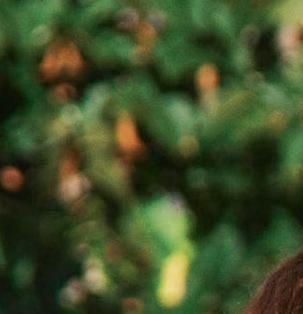























MAY 1 1 –20, 202 3
S E E R N CE M U S I C CE N E R
A festival of concerts, conversations, and ideas, focusing on the American Dream.
FESTI L CONCERTS ND KE N

MAY 11
FR GMEN S 1
lis eilerstein, cello
MAY 13
KE N E SPE KER: I BEL WILKER N
MAY 14, 17 & 20

PU CINI’S OPERA IN C NCERT HE GIRL OF THE LDEN WE
The leveland rchestra
Fran elser-Möst, conductor
Tamara Wilson, soprano (Minnie)
Roman Burdenko, as Jack Rance)
Limmie Pulliam, tenor (Dick Johnson) leveland rchestra Chorus
MAY 19
DRE M E’ E DRE MED; ONG E’ E SUNG; HOPE E’ E HELD
The leveland rchestra
Fran elser-Möst, conductor
F R EE E EN T S
MAY 13
UNITED IN SONG! A COMMUNIT Y CHORAL CELEBRATION
MAY 18
THE AMERICAN DREAM, THE AMERICAN NIGHTMARE, AND BLACK AMERICAN MUSIC
MAY 20
EXAMINING THE AMERICAN DREAM PANEL DISCUSSION
F OR MOR E I N F M T ION
Please sca h R Co e
State and federal dollars through the Ohio Arts Council supported your arts experience today.
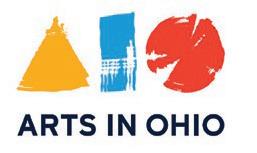



WHERE WILL THE ARTS TAKE YOU NEXT ? VISIT ARTSINOHIO.COM
 Cleveland Orchestra Youth Orchestra
Cleveland Orchestra Youth Orchestra
As a courtesy to the audience members and musicians in the hall, late-arriving patrons are asked to wait quietly until the first convenient break in the program, when ushers will help you to your seats. These seating breaks are at the discretion of the House Manager in consultation with the performing artists.

Please silence any alarms or ringers on pagers, cell phones, or wristwatches prior to the start of the concert.

Audio recording, photography, and videography are prohibited during performances at Severance. Photographs of the hall and selfies can be taken when the performance is not in progress. As a courtesy to others, please turn off any phone/ device that makes noise or emits light.
Get instant access to your tickets for Cleveland Orchestra concerts at Blossom Music Center and Severance by using the Ticket Wallet App. More information is at clevelandorchestra.com/ticketwallet
Contact an usher or a member of house staff if you require medical assistance. Emergency exits are clearly marked throughout the building. Ushers and house staff will provide instructions in the event of an emergency.
For the comfort of those around you, please reduce the volume on hearing aids and other devices that may produce a noise that would detract from the program. Infrared AssistiveListening Devices are available. Please see the House Manager or Head Usher for more details.
Regardless of age, each person must have a ticket and be able to sit quietly in a seat throughout the performance. Classical season subscription concerts are not recommended for children under the age of 8. However, there are several age-appropriate series designed specifically for children and youth, including Music Explorers (recommended for children 3 to 6 years old) and Family Concerts (for ages 7 and older).
Copyright © 2023 by The Cleveland Orchestra and Musical Arts Association
Amanda Angel, Managing Editor of Content (AAngel@clevelandorchestra.com)
Program books for Cleveland Orchestra concerts are produced by The Cleveland Orchestra and are distributed free to attending audience members. The Cleveland Orchestra is proud to have its home, Severance Music Center, located on the campus of Case Western Reserve University, with whom it has a long history of collaboration and partnership.
music happens here.



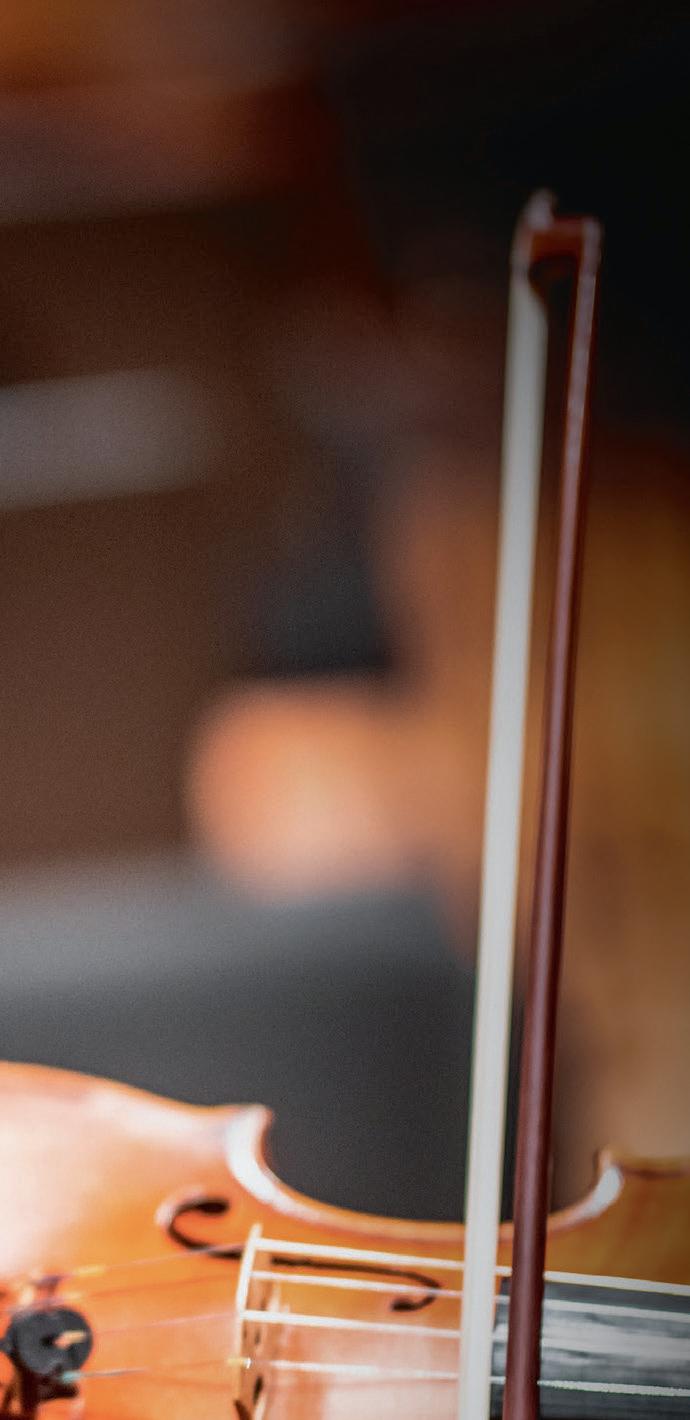
 Blake Collins ’24
Violin Performance major
Blake Collins ’24
Violin Performance major